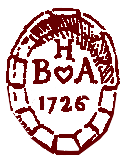Drummer Boy Returns
Following the Civil War, Berkeley went through several different owners. The plantation went up for auction in 1907 and was purchased by John Jamieson of New York.
John Jamieson had an unusual connection to the property. During the Civil War he had served as a drummer boy in Virginia with his brother Walter Jamieson, a Union officer. During July and August of 1862 they were encamped on the James River with Gen. George B. McClellan’s Army of the Potomac after his retreat from Richmond. Forty-five years later John Jamieson saw the notice of sale for Berkeley Plantation, he recognized it as the site of McClellan’s encampment — and his own home during the two months of youthful service with the Union Army.
John Jamieson was born in Dundee, Scotland and came to this country with his parents as a young boy settling in Brooklyn, NY. He became a successful businessman and engineer and later made his home in Rockaway Beach, NY. In 1907 John Jamieson married Harriet Barber. Together they had four children, Constance, Malcolm, Walter, and Frank.
Mrs. Jamieson and the children began to spend time during the summers at Berkeley. John Jamieson would take the night train from New York to Berkeley and back again the next evening. He never lived at Berkeley, but he loved the land and encouraged his son, Malcolm, to farm it one day and restore the house and grounds. John Jamieson died in 1926 in Richmond after becoming ill while traveling from Virginia to New York.
Malcolm moved to Berkeley in 1928 after earning his degree from Rutgers University in animal husbandry. He, along with his siblings, inherited Berkeley after the death of their father and he eventually bought out his family members for complete ownership of the plantation. Malcolm remembered planting his first tree, at age twelve, in the plantation’s immense lawn. Despite the fact that Berkeley was in ruins with scarce trees, neglected fields, and basement that had been used as a stable; Malcolm knew he wanted to spend the rest of his life at Berkeley.
Malcolm began right away restoring the house, clearing the land and replanting trees and shrubs. He farmed 500 of the 1400 acre estate. He met Grace Eggleston from Richmond and they married in 1933. The daughter of a Richmond judge, Grace was a city girl used to the refinements and cultural advantages of urban living. “When I first saw the place it was so terrible you wouldn’t think you could do anything with it. Besides I hated bugs and I hated the outdoors in the country — I’m allergic to everything, but when you’re in love you forget about those things. I was crazy about Mac.”
The Jamisons shared an interest in restoring Berkeley Plantation and researching its history. The couple searched libraries and the records of historical societies to learn the history of their home. Before Grace and Malcolm Jamieson were married, he had restored the Guest Quarters, a brick house next to the mansion. This was the couple’s home until the major part of the mansion’s restoration was finished in 1938.
Grace took over the interior decorations, filling the house with eighteenth-century antiques. Malcolm was frequently quoted saying “Every time Grace found a piece of furniture she wanted I’d have to sell a cow.” The couple gradually furnished the mansion with eighteenth-century antiques as appropriate pieces became available.
The gardens at the plantation had to be re-created as well. Civil War sketches of McClellan’s encampment show the extent of the devastation caused by the soldiers and their horses. Gardens had entirely disappeared under their trampling feet and hooves, leaving the Jamison’s not a trace of what might have been planted there. What did remain were five terraces between the house and the river, which had been dug by hand at the time the house was built. Here on these terraces Malcolm planted an 18th-century English boxwood garden, connected to the house by an allee’ of boxwood shrubs. On the middle terrace is the “ladies winter garden,” an enclosure of dense shrubbery designed to protect ladies from cool breezes when they sit outside in winter. On the lower terrace is the Rose Gardens, which overlook the lawn leading to the James River.
In the 1940’s, Berkeley opened to the public, the first of the James River Plantations to be opened daily to visitors as a private enterprise. Mr. Jamieson became very active in tourism, serving as Chairman of the Charles City county Electoral Board, the board of Virginia Travel Advisory Committee, and the Governor’s Advisory Board. He was honored for his work by the Virginia General Assembly and also received the Gabriella Page Award by the Association for the Preservation of Virginia Antiquities. He continued his efforts to preserve Route 5 as a scenic byway reminiscent of the time when it was a winding carriage-way between the capitals –Richmond and Williamsburg.
Malcolm and Grace together spent almost 70 years restoring Berkeley to the showplace it is today.
Malcolm and Grace had one son, Malcolm (Jamie), born in 1944. Jamie ran a successful wholesale nursery business for 35 years on the property and continues to manage the plantation. Jamie today can be seen on his John Deere, talking with guests and working in the gardens. Jamie and his wife, Judy, had two children, Mac and Cary, and three grandchildren. The Jamieson’s intend to carry on the love and dedication through each generation as did their parents and grandparents. Berkeley Plantation has never received state or federal funding and sustains itself with funds through admission tickets, weddings and farming. All funds go directly into upkeep and restoration of the plantation. It is the Jamieson’s intentions to keep the plantation open to the public for future generations to enjoy.

First Thanksgiving
